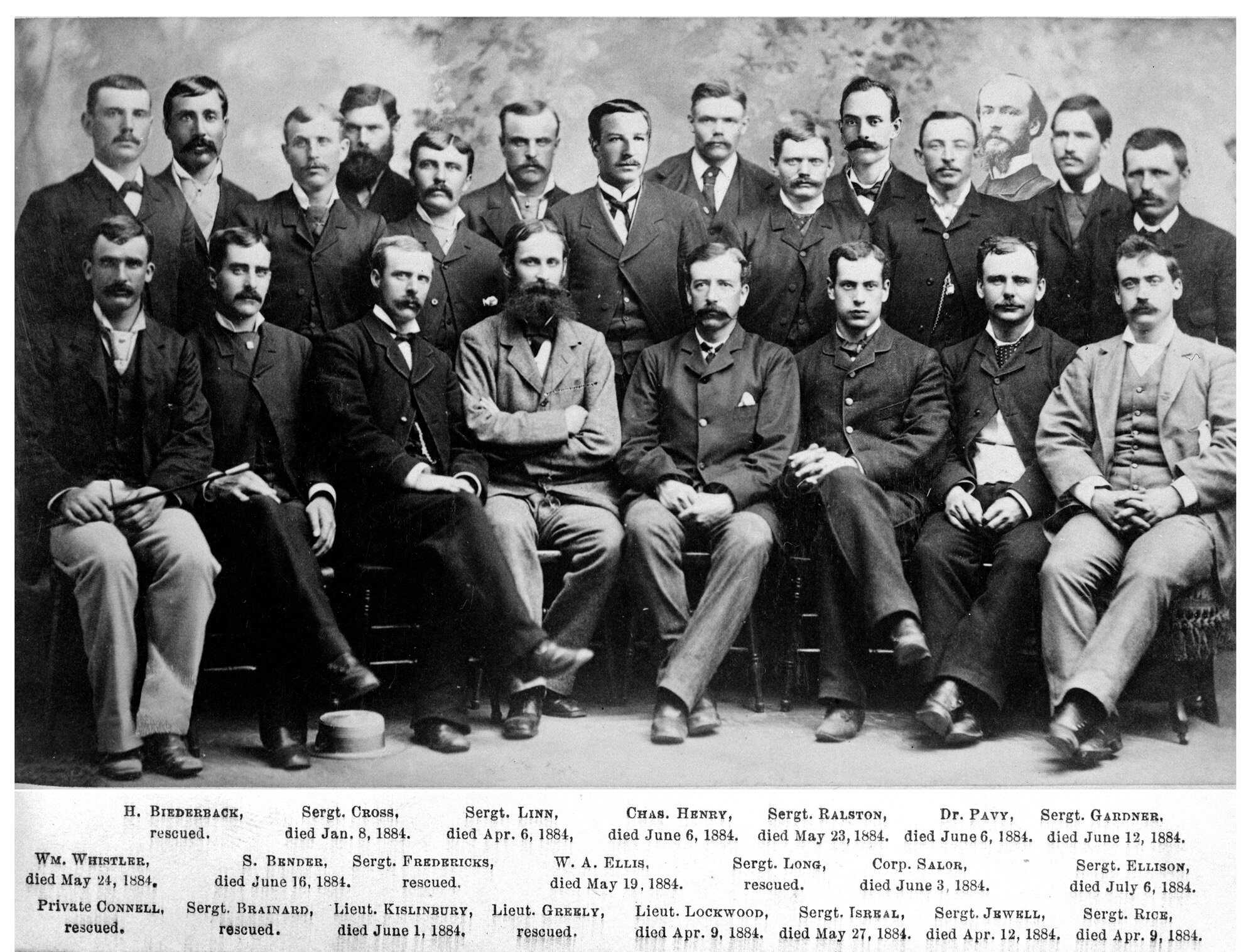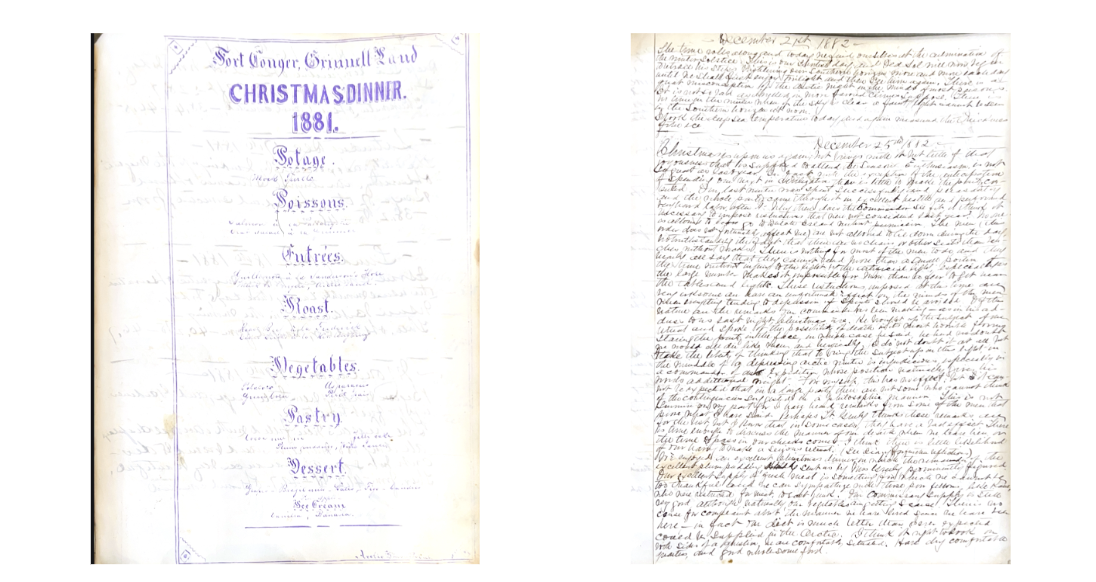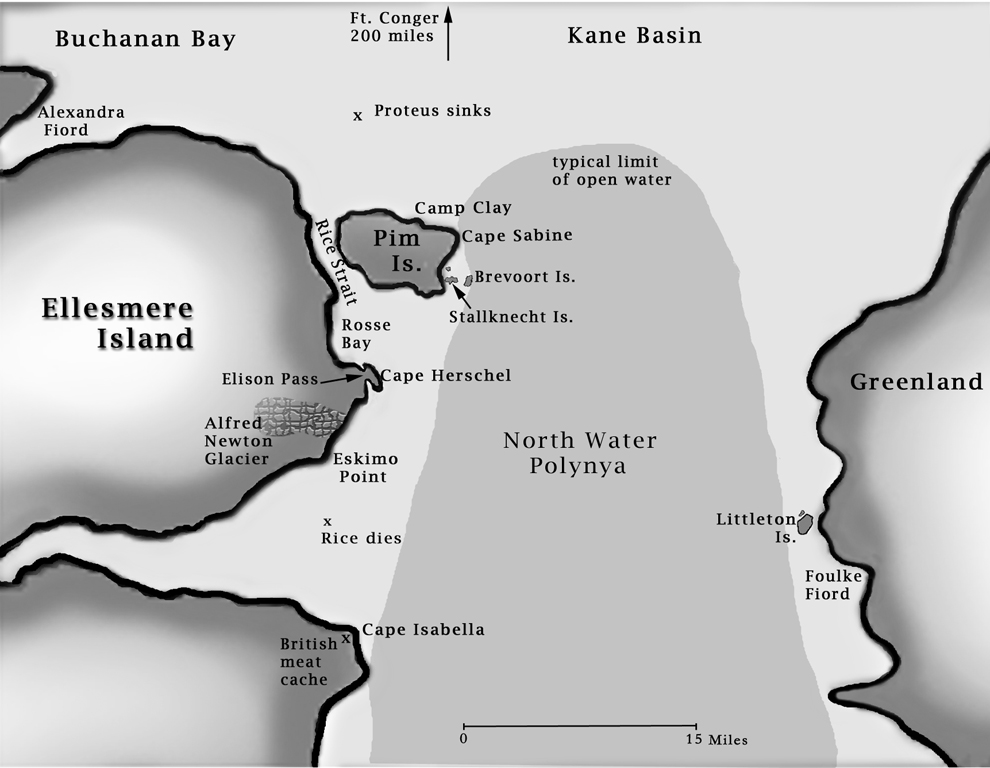Challenges on the Journey and an Unfaithful End

Of the 25 men who embarked on the Lady Franklin Bay Expedition, only six survived. The expedition, also known as the Greely Expedition, after Captain Greely, was a scientific mission aimed to gather groundbreaking data about the Arctic. Sponsored by the United States Congress, the plan was straightforward: the expedition team would be delivered to Ellesmere Island by the Proteus, where they would establish a research station. A re-supply ship was scheduled to arrive within a year, with the entire mission expected to last two years (Kobalenko).
A year passed without a resupply ship. Then another. Supplies dwindled, and the grim reality of their isolation began to take hold.
Though the team still had enough provisions to survive for a short time, the situation grew tense. Greely, adhering to the original mission plan, insisted the crew abandon their secure base at Fort Conger to head south, where they were supposed to meet with the Proteus. Unbeknownst to them, the Proteus had sunk, taking their supplies with it (Kobalenko). The decision to leave Fort Conger marked the beginning of the end. Rice’s diary ends on August 2nd, 1883, a week before this fatal journey south began.
The men grew agitated with Greely and he grew more depressed. Rice, along with Brainard stepped up to ensure progress continued (Kobalenko). You can see Rice’s growing frustration with Greely long before the decision to abandon Fort Conger by comparing Rice’s diary entry from December 25th, 1881, a print of their extravagant Christmas dinner menu, to one year later on the Christmas of 1882.

Rice seems to be mostly upset with the attitudes of the men stating, “Christmas is upon us again, but brings with it but little of that joyousness that is supposed to attend the season. Enthusiasm is not as great as last year” (Rice.)
But as for the fate of the expedition at this point he remains hopeful and filled with gratitude: “There is no cause for complaint about the manner we have lived since we have been here — in fact, our diet is much better than I ever expected could be supplied in the Arctic” (Rice).
His hopeful attitude, in congruence with his willingness to do the difficult tasks, like ceaselessly searching for food, made him popular among the men. He earned a reputation for being inexhaustible, volunteering to go on various expeditions to aid the crew (“Members”). On one of these trips, he discovered that the Proteus, the ship they traveled south to meet, had sank but that there were three caches of food nearby.
However, a tragic twist occurred when a member of his team, Corporal Ellison, suffered severe frostbite. Prioritizing Ellison’s survival, Rice and his team abandoned the food to transport him back to safety (“The Greely”). Greely later praised the men’s efforts, noting, “Ten hours’ struggle, with a helpless frozen man, brought them to our abandoned winter quarters at Eskimo Point” (Greely, 189).

Despite their heroic efforts, the need for food persisted. Rice and ‘Shorty’ Frederick, set out again to retrieve the food they had left behind (“The Greely”).
Greely documented the harrowing journey in his diary, describing the brutal conditions Rice and Frederick faced:
“A northward gale, with a temperature of —22° (—30° C.), prevailed, so that Rice and. Frederick froze their fingers in an unsuccessful attempt to kindle a fire, while the sleeping-bag was laid in the only possible place, exposed to the full fury of the gale” (Greely, 189).
“Rice and Fredrick on this day labored nineteen hours for the welfare of their comrades” (Greely, 189).
Tragically, this expedition marked the end of Rice’s life. Overcome by exhaustion and hunger, he died in Frederick’s arms on April 9, 1884. With no means to transport both Rice’s body and the supplies, Frederick buried him in the ice before returning to camp empty-handed (“The Greely”).

Rice’s death marked a turning point for the expedition. Morale plummeted, and the survivors faced a grim reality—death or rescue. The harrowing ordeal became infamous after the eventual rescue of six survivors revealed evidence of cannibalism among the deceased (Kobalenko).

Works Cited
Greely, A. W. (Adolphus Washington). Three Years of Arctic Service : An Account of the Lady Franklin Bay Expedition of 1881-84 and the Attainment of the Farthest North. New York: Scribners, 1886.
Kobalenko, Jerry. “Great Survival Stories: The Greely Expedition," Explorersweb, 4 May 2022, explorersweb.com/great-survival-stories-the-greely-expedition/.
“Members of the Greely Expedition.” PBS, Public Broadcasting Service, www.pbs.org/wgbh/americanexperience/features/greely-bios/. Accessed 22 Nov. 2024.
Rice, George. “Geo.W. Rice -Photographer- Polar Expedition to Lady Franklin Bay -1881-.” Diary, 1881-1882.
“The Greely Expedition.” PBS, Public Broadcasting Service, www.pbs.org/wgbh/americanexperience/features/greely-expedition/. Accessed 22 Nov. 2024.
